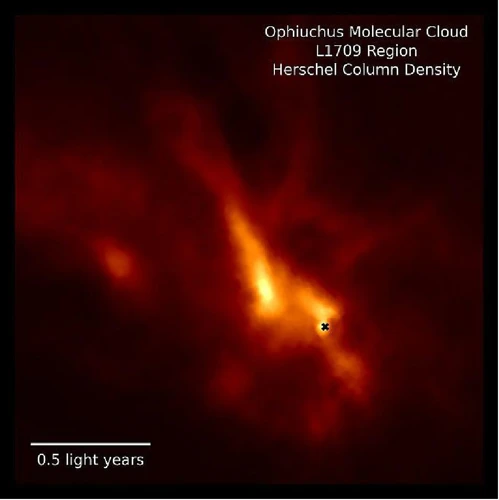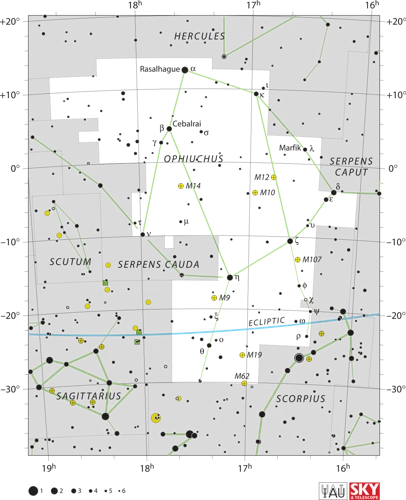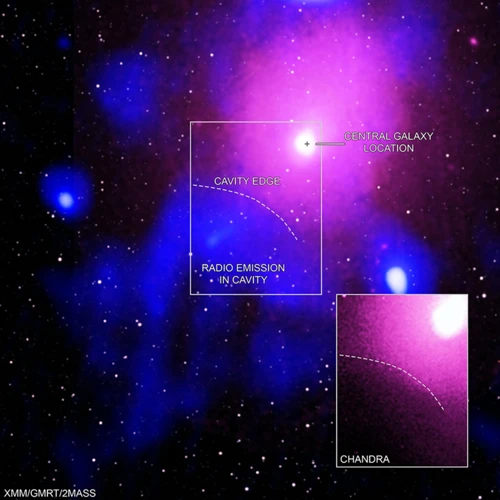The universe is vast and mysterious, filled with hidden wonders waiting to be discovered. One of the greatest enigmas that scientists have been grappling with is the existence of dark matter. What is dark matter? Why does it matter? How can we detect it? These questions have sparked a tireless quest for knowledge, as researchers strive to unveil the secrets of the invisible universe. In this article, we will delve into the captivating world of dark matter, exploring its nature, the methods used to detect it, and the leading candidates for its identity. Join us on this journey as we unravel the mysteries of the invisible cosmos and uncover the profound implications that dark matter holds for our understanding of the universe.
Contents
- What is Dark Matter?
- Detecting Dark Matter
- Unraveling the Dark Matter Puzzle
- The Leading Candidates
- Implications for the Universe
- Conclusion
-
Frequently Asked Questions
- 1. What are some of the leading theories on the nature of dark matter?
- 2. How does dark matter differ from dark energy?
- 3. Can dark matter be directly observed?
- 4. What role does dark matter play in the formation of galaxies?
- 5. Is it possible that dark matter doesn’t exist?
- 6. How do scientists detect dark matter?
- 7. Could dark matter be responsible for unexplained astronomical phenomena?
- 8. Can dark matter interact with ordinary matter?
- 9. Are there any experiments currently underway to detect dark matter?
- 10. What are the implications of understanding dark matter?
- References
-
Frequently Asked Questions
- 1. Can dark matter be directly observed?
- 2. How much dark matter is there in the universe?
- 3. What are the leading candidates for dark matter?
- 4. Why is dark matter important for our understanding of the universe?
- 5. How do scientists search for dark matter?
- 6. Can dark matter be responsible for dark energy?
- 7. How does dark matter interact with normal matter?
- 8. Is dark matter the same as antimatter?
- 9. Can dark matter be created or destroyed?
- 10. Are there any current experiments dedicated to detecting dark matter?
- References
- Read More
What is Dark Matter?

Dark matter is a perplexing and elusive substance that fills the vast expanse of the universe. Unlike ordinary matter, which makes up everything we can see and touch, dark matter does not absorb, reflect, or emit any form of electromagnetic radiation. This means that it is invisible to our telescopes and cannot be directly observed using traditional means.
The nature of dark matter remains an intriguing mystery, as scientists have yet to detect or identify its particles. However, its existence is inferred through gravitational effects on visible matter and the behavior of galaxies and galaxy clusters. According to current theories, dark matter is believed to account for approximately 85% of the total matter in the universe.
To better understand the concept of dark matter, imagine a cosmic-scale game of hide-and-seek, where the participants are invisible. Dark matter interacts gravitationally with ordinary matter, helping to shape the large-scale structure of the universe. It acts as an invisible scaffolding, binding galaxies and galaxy clusters together. Without dark matter, the universe would be a very different place.
Detecting Dark Matter

- Observational Evidence for Dark Matter: One method used to detect dark matter is through indirect observation. Scientists study the effects of dark matter on visible matter, such as the rotation curves of galaxies. These curves indicate that there is more mass present than what can be accounted for by visible matter alone, suggesting the presence of dark matter. Additionally, gravitational lensing, where the path of light is bent by the gravitational pull of dark matter, provides further evidence of its existence.
- The Quest for Direct Detection: Another approach involves directly detecting the particles that make up dark matter. Various experiments, such as underground detectors, aim to capture interactions between dark matter particles and ordinary matter. These experiments require extreme sensitivity to detect the incredibly rare interactions that may occur.
- Indirect Detection: Probing the Shadows: Scientists also search for indirect signals of dark matter in the form of high-energy cosmic rays or gamma rays that may be produced when dark matter particles annihilate or decay. Space-based observatories and ground-based telescopes are used to detect these signals, which may provide clues about the nature of dark matter.
Unraveling the Dark Matter Puzzle

Unraveling the dark matter puzzle has been the focus of intense research and scientific investigation. Scientists have employed various methods to shed light on the mysterious nature of dark matter and understand its properties. Two prominent avenues of exploration involve particle accelerators and cosmic radiation.
Particle accelerators, such as the Large Hadron Collider (LHC), are used to recreate conditions that existed moments after the Big Bang. By colliding particles at high speeds, scientists hope to produce dark matter particles or identify new particles that could help explain the nature of dark matter.
On the other hand, cosmic radiation provides another valuable avenue for investigating dark matter. Cosmic rays are high-energy particles that travel through space, and their interactions with dark matter may leave behind detectable signatures. Scientists analyze these signals in an effort to uncover clues about the presence and properties of dark matter.
Both particle accelerators and cosmic radiation offer unique insights into dark matter, complementing each other in the quest for understanding. By studying these phenomena, scientists hope to unlock the secrets of dark matter and unveil the invisible universe that lies beyond our current understanding.
The Leading Candidates

Exploring the vast realm of dark matter, scientists have put forth several leading candidates that could potentially explain its elusive nature. These candidates include:
- Weakly Interacting Massive Particles (WIMPs): WIMPs are hypothetical particles that are thought to interact weakly with regular matter but have a large mass. They are a popular candidate for dark matter due to their ability to explain the observed gravitational effects. Numerous experiments, such as the Large Hadron Collider, are underway to detect these elusive particles and confirm their existence.
- Axions: Axions are another class of hypothetical particles that could potentially explain dark matter. They are extremely light and have unique properties that make them difficult to detect. While there is currently no direct evidence for axions, experiments such as the Axion Dark Matter Experiment (ADMX) are attempting to detect these elusive particles and shed light on their role in the universe.
- MACHOs: Massive Compact Halo Objects: MACHOs are objects such as black holes, neutron stars, or brown dwarfs that could potentially account for some portion of dark matter. These objects emit little or no light, making them difficult to detect directly. However, gravitational microlensing observations have provided some evidence for the presence of MACHOs in certain regions of space.
While these candidates offer promising avenues for understanding dark matter, it is important to note that the search for its true nature is ongoing. Scientists continue to develop and refine theories, conduct experiments, and analyze data in the quest to unravel the mysteries of the invisible universe.
Implications for the Universe

The existence of dark matter has profound implications for our understanding of the universe. One of its key implications is its role in shaping the distribution of galaxies. Observations have shown that galaxies are not uniformly distributed, but instead, they form vast cosmic web-like structures. The gravitational pull of dark matter is believed to be responsible for the formation and evolution of these cosmic structures.
Additionally, dark matter plays a crucial role in the process of galaxy formation. Ordinary matter alone cannot account for the observed dynamics of galaxies and their rotational speeds. Dark matter provides the extra gravitational pull needed to explain these observations. It acts as a gravitational glue, holding galaxies together and allowing them to spin at the observed speeds.
The presence of dark matter has implications for the large-scale structure of the entire universe. It is thought to have influenced the formation of galaxy clusters and superclusters, which are the largest structures in the known universe. These massive structures are believed to have formed through the gravitational attraction of dark matter, acting as cosmic scaffolding for the arrangement of galaxies and other cosmic objects.
Understanding the implications of dark matter is crucial for our comprehension of the universe’s past, present, and future. By studying its effects on galaxies, the formation of structures, and the overall dynamics of the cosmos, scientists hope to unlock more secrets about the nature of dark matter and its intricate relationship with the visible universe.
Conclusion

In conclusion, the search for dark matter has captivated the scientific community and fueled our curiosity about the invisible universe. Although its nature and composition remain unknown, the evidence for dark matter’s existence continues to mount, thanks to its gravitational interactions with visible matter. Detecting dark matter directly or indirectly poses significant challenges, but scientists are making remarkable progress in their endeavors.
Efforts at particle accelerators, such as the Large Hadron Collider, are pushing the boundaries of our understanding and exploring new territories of particle physics. The exploration of cosmic radiation through experiments like the Alpha Magnetic Spectrometer is shedding light on the cosmic ray signatures of dark matter. And as our technologies advance, so does our ability to detect and study the universe’s hidden fabric.
The leading candidates for dark matter, such as Weakly Interacting Massive Particles (WIMPs), Axions, and MACHOs, continue to be investigated, bringing us closer to unraveling its mysterious identity. Furthermore, the implications of dark matter extend beyond the realm of astrophysics, playing a vital role in our understanding of galaxy formation, the evolution of the universe, and the very fabric of space-time.
In essence, dark matter is more than just a scientific puzzle—it is a gateway to unveiling the secrets of the universe. As our knowledge and technology continue to expand, the invisible cosmos becomes less opaque. There is still much to be discovered, and the journey to understanding the invisible universe is an ongoing and exciting endeavor.
Frequently Asked Questions

1. What are some of the leading theories on the nature of dark matter?
Scientists have proposed several theories to explain the nature of dark matter, including the hypothesis that it consists of weakly interacting massive particles (WIMPs), axions, or MACHOs (Massive Compact Halo Objects).
2. How does dark matter differ from dark energy?
Dark matter and dark energy are distinct phenomena. Dark matter refers to the invisible matter that interacts gravitationally, while dark energy is a mysterious force that is thought to be responsible for the accelerated expansion of the universe.
3. Can dark matter be directly observed?
No, dark matter cannot be directly observed since it does not emit, absorb, or reflect any form of electromagnetic radiation. Its presence is inferred through its gravitational effects on visible matter.
4. What role does dark matter play in the formation of galaxies?
Dark matter plays a crucial role in the formation of galaxies by providing the gravitational framework for the visible matter to clump together and form structures. It acts as a gravitational scaffold that holds galaxies and galaxy clusters together.
5. Is it possible that dark matter doesn’t exist?
While there is still much we don’t know about dark matter, its existence is strongly supported by various lines of observational evidence, such as the rotational velocities of galaxies and the distribution of mass in galaxy clusters. However, its precise nature and composition remain unknown.
6. How do scientists detect dark matter?
Scientists employ various methods to detect dark matter. These include indirect detection through the observation of its effects on visible matter and the search for specific particles, as well as direct detection experiments that aim to capture interactions between dark matter particles and ordinary matter.
7. Could dark matter be responsible for unexplained astronomical phenomena?
Dark matter is often invoked to explain unexplained astronomical phenomena, such as the observed rotational speeds of galaxies that cannot be accounted for by the mass of visible matter alone. It is also believed to have played a role in the formation of large-scale structures in the early universe.
8. Can dark matter interact with ordinary matter?
Dark matter interacts with ordinary matter through gravitational interactions. While dark matter particles are thought to be weakly interacting, they can still affect the motion and distribution of visible matter through their gravitational pull.
9. Are there any experiments currently underway to detect dark matter?
Yes, there are several experiments underway to detect dark matter. These include underground detectors that aim to directly detect interactions between dark matter particles and ordinary matter, as well as particle accelerator experiments that may produce signatures of dark matter particles.
10. What are the implications of understanding dark matter?
Understanding dark matter is crucial for our understanding of the universe. It can provide insights into the formation and evolution of galaxies, the large-scale structure of the universe, and even the fundamental nature of matter and energy. Additionally, unraveling the mysteries of dark matter may lead to technological breakthroughs and new discoveries in physics.
References
Frequently Asked Questions

1. Can dark matter be directly observed?
No, dark matter cannot be directly observed as it does not interact with light or any other form of electromagnetic radiation. However, its presence can be inferred through its gravitational effects on visible matter.
2. How much dark matter is there in the universe?
Dark matter is estimated to make up about 85% of the matter in the universe. This means that the visible matter we can see, such as stars and galaxies, only accounts for a small fraction of the total matter content.
3. What are the leading candidates for dark matter?
The leading candidates for dark matter include Weakly Interacting Massive Particles (WIMPs), axions, and Massive Compact Halo Objects (MACHOs). These particles or objects are currently being studied and investigated as potential explanations for the elusive dark matter.
4. Why is dark matter important for our understanding of the universe?
Dark matter plays a crucial role in the formation and evolution of galaxies. It helps explain the observed rotational speeds of galaxies, the distribution of matter in the universe, and the large-scale structure of the cosmos. Understanding dark matter is essential for a complete understanding of the universe’s workings.
5. How do scientists search for dark matter?
Scientists search for dark matter through various methods, including indirect detection, direct detection, and experimental efforts at particle accelerators. These methods involve observing the effects of dark matter on visible matter, attempting to directly detect dark matter particles, and generating particles that may interact with dark matter, respectively.
6. Can dark matter be responsible for dark energy?
No, dark matter and dark energy are two distinct components of the universe. Dark matter refers to the unseen matter that affects the motion of galaxies, while dark energy is a hypothetical form of energy that is thought to be responsible for the universe’s accelerating expansion.
7. How does dark matter interact with normal matter?
Dark matter interacts with normal matter only through gravitational forces. It does not interact electromagnetically, which is why it does not emit, absorb, or reflect light. This makes it challenging to directly detect or observe dark matter.
8. Is dark matter the same as antimatter?
No, dark matter is not the same as antimatter. Antimatter consists of particles with the same mass as normal matter but with opposite charge. Dark matter, on the other hand, refers to the unknown particles or objects that do not emit or interact with light or electromagnetic radiation.
9. Can dark matter be created or destroyed?
Dark matter is thought to be stable and not easily created or destroyed. It has existed since the early universe and continues to pervade galaxies and galaxy clusters. However, its exact nature and origins are still not fully understood.
10. Are there any current experiments dedicated to detecting dark matter?
Yes, numerous experiments are currently dedicated to detecting dark matter. These range from underground detectors searching for dark matter particles to space-based observatories observing the indirect effects of dark matter on cosmic radiation. Scientists are actively working to unravel the mysteries of dark matter.
References
- Dark matter: search for the invisible begins in an old gold …
- What Is Dark Matter, and Where Is it Hiding?
- Dark matter may have its own ‘invisible’ periodic table of …







